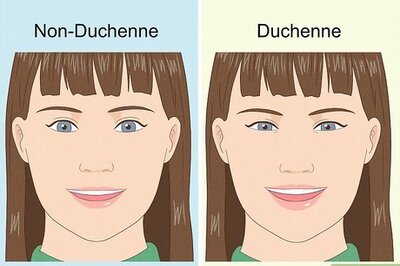
views
Once we understand the materials, how it is made and how it interacts with its surroundings, we can understand paintings better, said popular art conservationist S Girikumar, in his lecture on ‘Understanding Art Materials’ at Apparao Galleries, on Tuesday.
As he displayed a cross-sectional view of an oil painting to an eager audience of art students, artists and professors of art who were all well-equipped with pen and paper, he pointed out how a ground layer was necessary on top of the canvas base. “The ground layer, which is usually a white pigment for which calcium carbonate is traditionally used, isolates the oil (in the paint) from the canvas,” he said. The ground layer helps in closing the weaves of the canvas, which are usually materials such as linen, cotton or jute. The next layer, the pigment, is determined based on the binding medium. The coloured pigment powders can be mixed with any binding medium including oil, water or even egg whites, to make a paint paste. “When the medium is oil, you can’t use any oil. It must be a drying oil that has the ability to dry over time,” said Girikumar, as he listed linseed soil (made from flaxseed) as the most commonly used. “Poppy seed and walnut oils are also used, but linseed oil doesn’t encourage cracking of the painting as much as the other two do,” he said.
To enhance the drying property of the oils, they are usually treated with lead or salt or exposed to sunlight for a long period of time. “This helps in getting the sediments to settle down and only the clear oil is available for use,” Girikumar explained.
The reason he emphasised on the drying properties of oil was because with climatic conditions in India, oil paintings usually take almost three decades to completely dry. “Oil paintings look touch-dry within 48 hours, but that doesn’t mean they’re completely dry,” he said. The paintings need constant contact with air for a sedimentation process to take place and for it to completely dry over the years,” he said.
Another element that oil paintings require in the early stages is plenty of light. “Otherwise they tend to get darker in the later years,” he said, but it is thankfully a reversible process. “Take it out and keep it in a well-lit area and over time, it will become lighter again,” he said.
Stress cracks were illustrated with various crack patterns, stress points were pointed out and a few other ways in which cracks can be caused in paintings – mostly due to wrong storage, handling or transport methods – were explained.
As an important tip, he said that all paintings need to be aired every 48 hours to prevent any fungal growth or damage. “Fungal growth on the backside of the painting is irreversible. When you hang it on the wall, maybe you can put a small piece of thermocol at the waist to give a gap between the wall and the painting,” he said.
















Comments
0 comment